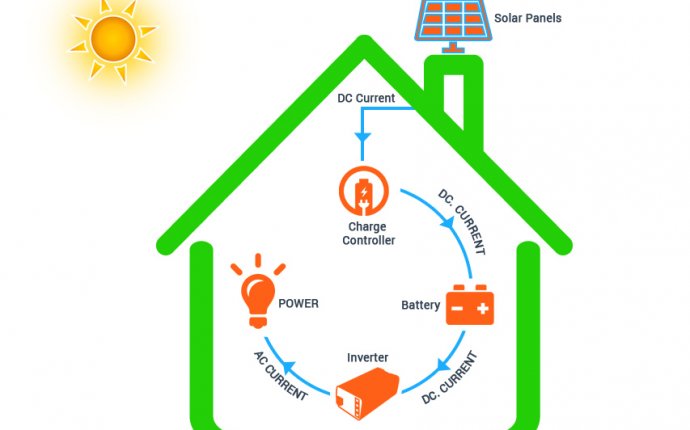
Components of solar Panel System
Solar intertie photovoltaic (PV) systems are not particularly complex. First there are panels, which collect the sunlight and turn it into electricity. The DC signals are fed into an inverter, which converts the DC into grid-compatible AC power (which is what you use in your home). Various switch boxes are included for safety reasons, and the whole thing is connected via wires and conduit.
The solar PV-generated power is connected to your home’s grid at your main fuse box.
Keeping it simple pays. In general, the vast majority of customers install the simplest possible system on their roofs because this allows for the best return on investment. You can get real fancy with solar PV, but costs rise fast. You can choose to put a “skirt” around your solar panels, for example, to hide the underlying mounting frames and improve the appearance, but you pay extra for this option, and the production suffers as well because the panels operate at a hotter temperature (the skirt prevents cooling breezes). Stick with proven, field-tested equipment that’s as simple as your situation merits and you’ll achieve the best return on investment.
Here is a list of the PV system basics:
- Panels: PV panels, which cost anywhere from $2.40 per watt to over $5 per watt, are the single biggest expense of a PV system. Their placement and mounting affect your system performance more than any other facet of the job.
- Mounting equipment: Mounting your PV panels is of critical importance. First, you need to mount the panels where they’ll get maximum sunshine over the course of a year. But the more difficult problem is to mount them with enough integrity that they’ll stay put for 25 years or more.
- DC-to-AC inverters: Inverters take the low-voltage, high-current signals from the PV panels and convert them into 120VAC (or 240 VAC), which is directly compatible with grid power. Inverters cost around $0.70 per watt, or around $2, 600 for a typical application. From a reliability standpoint, they are generally the weak link in any PV system, so quality is a must.
- Tracking mounts: Tracking mounts mechanically move the PV panels over the course of a day so that they directly face the sun at all times. Dual axis trackers change both azimuth and elevation, while single axis trackers only match the azimuth.
- Disconnect switches: Disconnect switches are of critical importance, and they need to be mounted within easy reach. Every member of your family should know exactly how to turn the PV system off for safety reasons. If any abnormal behavior occurs in your home’s electrical system, shut off the solar system first.
- Wiring and fuse box connections: Wiring, conduit, and connections to your household main fuse box are minor hardware expenses, but they comprise a big chunk of the labor when you’re installing a PV system.
- Utility power meters: Conventional power meters are capable of spinning backward, but utility companies usually change to a special digital meter when you connect to the grid because most solar customers go to the TOU (time-of-use) rate structure, which requires more intelligent processing than a mechanical device is capable of.









